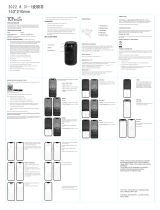
CONTENTS
Package Contents ....................................................................................................1
Chapter 1. Product Overview...................................................................................2
1.1 Product Overview ........................................................................................................... 2
1.2 Main Features................................................................................................................. 2
1.3 Panel Layout................................................................................................................... 3
1.3.1 The Front Panel ................................................................................................................... 3
1.3.2 The Back Panel.................................................................................................................... 4
Chapter 2. Connecting the ONT...............................................................................5
2.1 System Requirements .................................................................................................... 5
2.2 Installation Environment Requirements .......................................................................... 5
2.3 Connecting the ONT ....................................................................................................... 5
Chapter 3. Quick Installation Guide ........................................................................7
3.1 TCP/IP Configuration...................................................................................................... 7
3.2 Quick Installation Guide.................................................................................................. 8
Chapter 4. Configuring the ONT ............................................................................10
4.1 Login ............................................................................................................................. 10
4.2 Status............................................................................................................................ 10
4.3 Network Setting ............................................................................................................ 12
4.3.1 PON Certification ............................................................................................................... 12
4.3.2 VLAN Setting...................................................................................................................... 13
4.3.3 LAN Setting ........................................................................................................................ 13
4.4 Management................................................................................................................. 14
4.4.1 User Management ............................................................................................................. 14
4.4.2 Firmware Upgrade ............................................................................................................. 15
4.4.3 Factory Defaults ................................................................................................................. 16
4.4.4 Reboot................................................................................................................................17
Appendix A: Specifications ...................................................................................18
Appendix B: Configuring the PC...........................................................................20
Appendix C: Troubleshooting ...............................................................................24




















